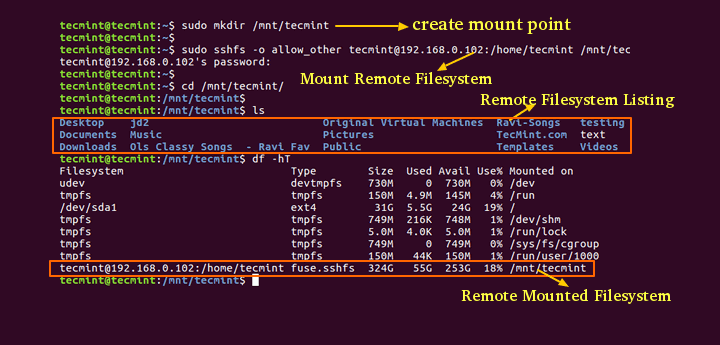2020. 3. 22. 17:03ㆍ카테고리 없음
Try the following: 1. Ensure that the client would have access permissions right-from the local mount-point down e.g.
The remote machine is seen as user 'unknown'. Do they have read and execute access to ALL the directories in the PATH? So if you exported '/usr/local/bin' you read to be able to cd through: '/usr', '/usr/local', '/usr/local/bin'. If you run 'showmount -e ' from the client can you see the share you are trying to access. Can you ping the client from the server? Does the hostname resolve correctly/as per the export? Have you tried setting the client as 'root' on the export.

'root=XXX' in the '/etc/exports' 5. Refresh the export on the server: 'exportfs -au; exportfs -a; exportfs'.
To access a file system's contents, you must attach its block device to a mount point in the directory hierarchy. You can use the mkdir command to create a directory for use as a mount point, for example: # mkdir /var/projects You can use an existing directory as a mount point, but its contents are hidden until you unmount the overlying file system. The mount command attaches the device containing the file system to the mount point: # mount options device mountpoint You can specify the device by its name, UUID, or label. For example, the following commands are equivalent ways of mounting the file system on the block device /dev/sdb1: # mount /dev/sdb1 /var/projects # mount UUID='ad8113d7-b279-4da8-b6e4-cfba045f66ff' /var/projects # mount LABEL='Projects' /var/projects If you do not specify any arguments, mount displays all file systems that the system currently has mounted, for example: # mount /dev/mapper/vghost01-lvroot on / type ext4 (rw).
Problem With Volume Control
In this example, the LVM logical volume /dev/mapper/vghost01-lvroot is mounted on /. The file system type is ext4 and is mounted for both reading and writing. (You can also use the command cat /proc/mounts to display information about mounted file systems.) The df command displays information about home much space remains on mounted file systems, for example: # df -h Filesystem Size Used Avail Use% Mounted on /dev/mapper/vghost01-lvroot 36G 12G 22G 36% /. You can use the -B (bind) option to the mount command to attach a block device at multiple mount points. You can also remount part of a directory hierarchy, which need not be a complete file system, somewhere else. For example, the following command mounts /var/projects/project1 on /mnt: # mount -B /var/projects/project1 /mnt Each directory hierarchy acts as a mirror of the other.

The same files are accessible in either location, although any submounts are not replicated. These mirrors do not provide data redundancy. You can also mount a file over another file, for example: # touch /mnt/foo # mount -B /etc/hosts /mnt/foo In this example, /etc/hosts and /mnt/foo represent the same file. The existing file that acts as a mount point is not accessible until you unmount the overlying file.

The -B option does not recursively attach any submounts below a directory hierarchy. To include submounts in the mirror, use the -R (recursive bind) option instead. When you use -B or -R, the file system mount options remain the same as those for the original mount point. To modify, the mount options, use a separate remount command, for example: # mount -o remount,ro /mnt/foo You can mark the submounts below a mount point as being shared, private, or slave. Mount -make-shared mountpoint Any mounts or unmounts below the specified mount point propagate to any mirrors that you create, and this mount hierarchy reflects mounts or unmount changes that you make to other mirrors. Mount -make-private mountpoint Any mounts or unmounts below the specified mount point do not propagate to other mirrors, nor does this mount hierarchy reflect mounts or unmount changes that you make to other mirrors. Mount -make-slave mountpoint Any mounts or unmounts below the specified mount point do not propagate to other mirrors, but this mount hierarchy does reflect mounts or unmount changes that you make to other mirrors.
To prevent a mount from being mirrored by using the -B or -R options, mark its mount point as being unbindable: # mount -make-unbindable mountpoint To move a mounted file system, directory hierarchy, or file between mount points, use the -M option, for example: # touch /mnt/foo # mount -M /mnt/foo /mnt/bar To unmount a file system, use the umount command, for example: # umount /var/projects Alternatively, you can specify the block device provided that it is mounted on only one mount point. For more information, see the mount(8) and umount(8) manual pages.